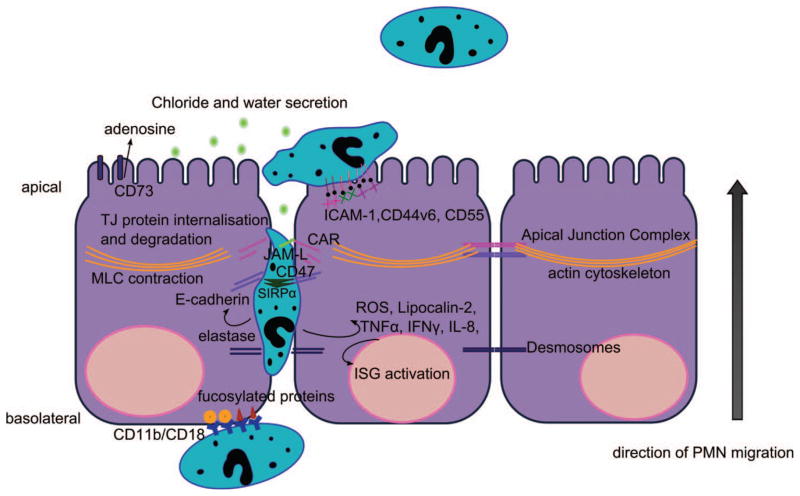Figure 2.
Molecular interactions of neutrophils with epithelial cells during transepithelial migration. PMNs are recruited to the intestinal epithelium following extravasation from the local microcirculation. They subsequently migrate across the subepithelial space (lamina propria) and adhere to the basal aspect of IECs through interactions between CD11b/CD18 on neutrophils and fucosylated receptors on the epithelium. PMNs transmigrate across the epithelium in the paracellular space that is facilitated through binding interactions with cell surface receptors and releasing molecules that disrupt the apical junction complex. PMN migration across tight junctions (TJs) is regulated, in part, by interactions between PMN-expressed junctional adhesion molecule like protein (JAML) and coxsackie and adenovirus receptor (CAR). PMN migration across epithelial TJs results in increased permeability and enhanced access of microbes to the subepithelial space. PMN migration across TJs is also associated with the activation of ROS production, TLR signaling cascades, interferon-stimulated genes (ISGs), and the production of inflammatory cytokines. After migration across TJs, PMN interacts with the luminal or apical membrane of IECs via ICAM-1, CD44v6, and CD11b/CD18, resulting in, as of yet, incompletely defined signaling events, in addition to stimulating water efflux by induction of electrogenic Cl− secretion, through the release of 5′AMP, which is converted into adenosine by apically localized CD73. PMNs = polymorphonuclear leukocytes; IEC = intestinal epithelial cell; ROS = reactive oxidative species; TLR = toll-like receptor; AMP = adenosine monophosphate; ICAM-1 = intercellular adhesion molecule-1.

